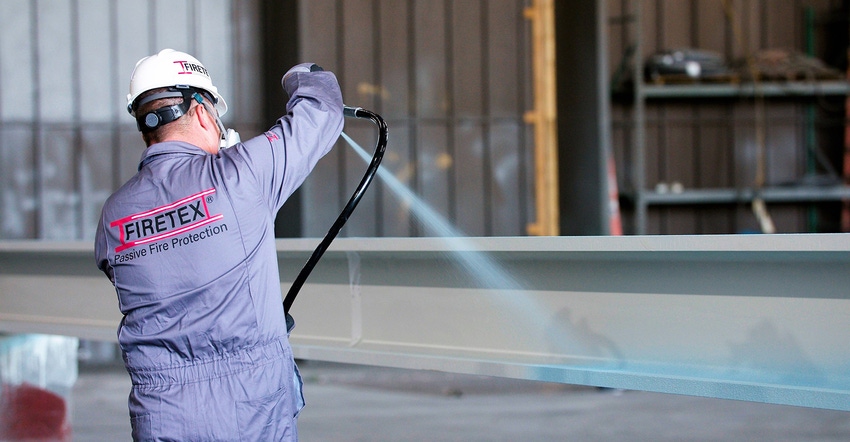Key Insights on Fire Protection for Battery Plant Construction
Explore Sherwin-Williams' expert insights on fire protection solutions, providing essential knowledge for robust construction, especially in a high-profile EV battery project.

As the landscape of industrial construction evolves, the relationship between technological advancement and safety measures takes center stage in constructing Electric Vehicle (EV) battery plants. One unseen but indispensable element in this complex task is the application of advanced fire protective coatings. In this interview into the world of fire protection in construction, we've gained valuable perspectives from Jacob Allard and Joseph Windover, both Project Development Managers specializing in Construction Solutions at Sherwin-Williams Protective & Marine Coatings.
Notably, they've opted to share their insights collaboratively via email, providing a joint and comprehensive response to our inquiries. Through their collective expertise, we delve into the details of Sherwin-Williams' groundbreaking solutions, aiming to shed light on their innovative approaches to fire protection in the construction landscape of EV battery plants.
Can you elaborate on the specific advantages of applying fire protective coatings in a controlled shop environment, and how it contributes to safer, faster, and more straightforward facility construction?
Allard & Windover: Steel fireproofing is a vital early step in the construction process. This coating is classified as passive fire protection (PFP), which uses building materials and design to contain and slow down potential fires. This contrasts with active fire protection (AFP), which involves systems like sprinklers and alarms that actively detect and combat fires. Both forms are essential for comprehensive fire safety in buildings.
Shop-applied passive fire protection leads to safer, faster, and more straightforward facility construction in several ways. Serious hazards are significantly reduced by decreasing the number of people and equipment on-site and limiting work at elevated heights. Shop-applied fireproofing can be done at ground level, with minimal time at height for assembly and touch-ups.
Another benefit of the shop-applied process for passive fire protection is increased job site productivity and decreased workflow disruptions. When steel is coated in a controlled environment, it has the potential to speed up the construction schedule and move EVs to market faster. The fireproofed steel arrives onsite – coated and cured – ready for assembly. When done this way, there is less idle time waiting for curing between coats or disruptions by weather. Steel can be more easily assembled, allowing walls, roofing, and other mechanical, electrical, and plumbing (MEP) trades to continue their work without disruption.
You mention the early integration of off-site fire protection in the design process as a critical factor in advancing lean construction. How does this early integration impact the overall efficiency and predictability of megaproject construction, especially in the context of next-gen EV gigafactories?
Allard & Windover: Shifting fireproofing to a controlled shop setting transforms scheduling and procurement into proactive, efficiency-driven processes that complement—rather than complicate—the construction sequence. By sequencing and pairing steel fabrication with fireproofing, the steel arrives on-site pre-coated and ready for immediate assembly. This streamlines processes for subsequent trades and reduces on-site congestion. Along with synchronization and simplification of the project schedule, this strategic approach reduces variability and oversight, increasing quality control since coatings are applied at eye level.
Sherwin-Williams is the specified provider of fire protective coatings on multiple high-profile EV battery plants. What unique challenges do these projects pose, and how does FIRETEX 9502 epoxy fireproofing, or "blue steel," address these challenges on fire protection on steel beams and columns?
Allard & Windover: There are several unique challenges, building specifications, and safety requirements to address when constructing an EV battery manufacturing plant, mainly due to the hazardous chemicals being processed at these facilities. In manufacturing EV battery cells, two solvents are commonly used—N-methyl-2-pyrrolidone (NMP) and dimethyl sulfoxide (DMSO). Facilities need passive fire protection for steel and high-performance flooring systems to mitigate potential hazards like corrosion and combustibility commonly associated with these two chemicals.
Sherwin-Williams has developed coatings solutions to meet and address these needs. When involved early in the facility design process, we can expedite the construction of EV battery manufacturing facilities. Our method of applying FIRETEX 9502 epoxy intumescent coatings off-site in a controlled shop environment can save up to 8-12 weeks in the overall construction schedule and allows sub-trades like mechanical, electrical, and plumbing to begin their work sooner and without interruption.
.jpg?width=700&auto=webp&quality=80&disable=upscale)
The thickness of the FIRETEX 9502 epoxy coatings applied correlates to the level of fire protection desired. Courtesy of Sherwin-Williams.
FIRETEX 9502 epoxy coatings are rigorously tested to international standards to ensure they can provide the claimed (and often specified) duration of fire protection. Their performance in controlled test scenarios confirms their ability to protect steel structures for at least 3 hours. FIRETEX 9502, which is certified and tested to UL 2431, has high durability and corrosion protection and can withstand the rigors of handling, transportation, construction, and high traffic better than softer catalyzed or single-component materials.
The thickness of the FIRETEX 9502 epoxy coatings applied correlates to the level of fire protection desired. A thicker application will provide a longer duration of fire resistance. These intumescent coatings can achieve their performance potential due to several factors:
Chemical Composition: Intumescent coatings contain chemicals that, when heated, react to produce a charred layer that is much thicker than the original coating. This layer has low thermal conductivity, slowing the rate at which heat reaches the steel.
Expansion Ratio: The intumescent coating can expand to many times its original thickness. This creates a substantial buffer zone between the fire and the steel, thus insulating the steel from the heat.
Adhesion: The epoxy coating remains adhered to the steel even as it expands, maintaining its protective layer without cracking or flaking away under the stress of the heat.
Additionally, we have advanced high-performance flooring systems that are designed to meet the unique needs of clean and dry room environments, like chemical resistance to NMP for up to 14 days (tested under glass for ASTM D1308-20) and other benefits engineered specifically for EV battery facilities.
Could you provide examples or case studies where applying shop-applied intumescent coatings, such as FIRETEX 9502, has significantly contributed to faster builds, cost savings, and smoother site operations in constructing EV gigafactories?
Allard & Windover: General Motors and Barton Malow praised the shop-applied process at the recent Advanced Manufacturing Facility Construction summit in Nashville, TN. As reported in an article by Forbes, they shared the following emailed remarks:
“Adopting modern shop-applied fire protective coatings has been transformative, significantly shortening construction timelines while upholding the highest safety standards,” stated Alonso De Avila, Jr. project manager, sustainable workplaces, General Motors. “This efficiency is crucial in accelerating our journey to market with advanced batteries and vehicles, ensuring Ultium remains at the forefront of sustainable transportation solutions."
“The ‘Modern Shop-Applied’ process of fire protective coatings is essential for success on our mega projects / automotive EV cell manufacturing facilities,” added Alan Blanchette, senior project director, automotive / EV battery, at Barton Malow Company, which provided construction services for the Ultium plant in Lordstown, OH. “The application allows us to streamline our construction schedule, enhance onsite safety, and accelerates project delivery—all this plus cost reductions.”
Further, the new Sherwin-Williams headquarters, currently under construction in downtown Cleveland, Ohio, uses shop-applied intumescent fireproofing for the building’s steel. With the use of shop-applied steel, there has been an estimated 8% reduction in insurance costs due to the removal of people and equipment from the job site.
How does FIRETEX 9502 epoxy differ from traditional solvent-based coatings, and how does it impact the overall project timeline, especially in comparison to field applications that might face weather and environmental delays?
Allard & Windover: FIRETEX 9502 epoxy fireproofing requires only one coat to achieve a standard 200 MIL thickness, whereas solvent-based products require multiple coats to achieve the same thickness. Multiple coats can require long cure times, increasing the potential for weather and environmental elements to delay and extend wait times.
When solvent-based solutions are combined with field-applied fireproofing, there is a high probability of schedule delays. This often delays sub-trades like mechanical, electrical, and plumbing from beginning their work on the job site and extends the overall project build timeline.
About the Author(s)
You May Also Like





